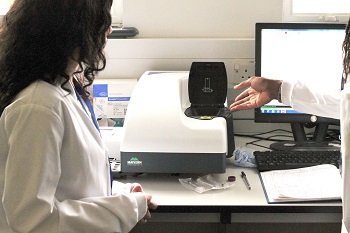The cross-disciplinary capabilities of Malvern Panalytical’ technology are being fully exploited at Queen Mary University London. The Zetasizer Nano, NanoSight Nanoparticle Tracking Analysis (NTA) and Mastersizer 2000 systems are all employed within the university’s multi-disciplinary lab.
 Malvern Panalytical’ Zetasizer Nano, Nanoparticle Tracking Analysis (NTA) and Mastersizer 2000 are employed together in multi-disciplinary lab at Queen Mary University London.
Malvern Panalytical’ Zetasizer Nano, Nanoparticle Tracking Analysis (NTA) and Mastersizer 2000 are employed together in multi-disciplinary lab at Queen Mary University London.
The instruments serve a wide variety of research groups working in areas as diverse as silica coating formulation through to tissue regeneration, demonstrating the value that Malvern Panalytical’s robust technology brings throughout the scientific arena.
“Our lab is part of The School of Engineering and Materials Science but the instruments are used by everyone from biologists through to physicists,” said Dr Krystelle Mafina, Experimental Officer in Materials Characterization at Queen Mary University London. “Stability and particle size define material and biomaterial performance and the Zetasizer Nano is perfectly placed to deliver this information within our multi-user environment. The instrument is robust, easy to use and data acquisition is straightforward. It is as close to ‘student proof’ as it is possible to be!”
Capable of measuring particle size, zeta potential, molecular weight and protein mobility, the Zetasizer Nano from Malvern Panalytical is the world’s most widely used dynamic light scattering system. Recently, research groups at Queen Mary University London have been supplementing data from the Zetasizer with data from the NanoSight Nanoparticle Tracking Analysis (NTA) system to study the behaviour of their particles and molecules over time.
NTA is a unique particle visualization technique that enables each particle within a solution to be analysed through direct observation and measurement of the diffusion event. The instantaneous, high level data delivered by NTA is being used both to validate results from Zetasizer Nano analysis and to deliver additional insight into particle behaviour.
NTA is a relatively new addition to the lab but is already bringing value to several areas of research. For example, the ability to visualize particles over time is allowing one research group developing self-assembling proteins to trace the changes in size of their molecules over time to better understand the dynamics of aggregation. The more we learn about the technique the greater application it is finding. Malvern Panalytical’ webinars, live chats and technical support are very useful in this area and continue to help our researchers push the boundaries of materials and biomaterials science.
Dr Mafina - Malvern Panalytical
Find out more about how Malvern Panalytical’s techniques combine to deliver comprehensive materials and biomaterials characterization at the Malvern Panalytical website www.malvern.com
Malvern Panalytical, Malvern Panalytical, Mastersizer and Zetasizer are registered trademarks of Malvern Panalytical